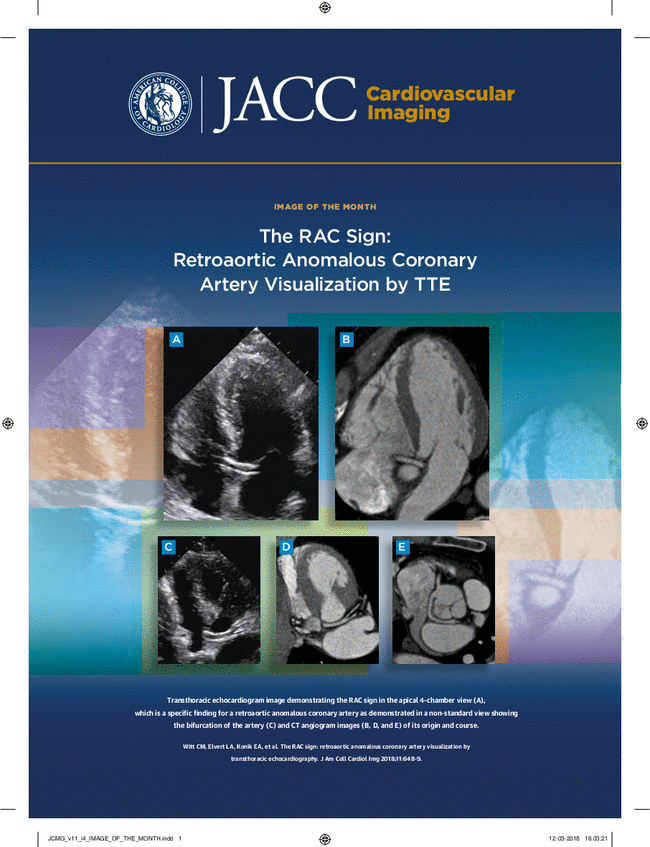从阵发性心房颤动到持续性心房颤动:左心房后壁进行性纤维化。
IF 15.2
1区 医学
Q1 CARDIAC & CARDIOVASCULAR SYSTEMS
引用次数: 0
摘要
背景:从阵发性心房颤动到持续性心房颤动(AF)的途径仍然知之甚少,导致治疗结果不理想。目的:在这项研究中,作者试图利用18f标记的氟化铝(AlF)靶向成纤维细胞激活蛋白抑制剂(FAPI)正电子发射断层扫描(PET)-磁共振成像(MRI)研究AF不同阶段的纤维化水平。方法:78例房颤患者和49名健康志愿者参与本研究。所有参与者均接受FAPI-PET-MRI检查。测量左心房后壁(LAPW)、房间隔、前壁、附肢和房顶各区域的阳性比率和比例。根据7天的动态监测和病史,将患者分为阵发性(PAF)、持续性(PsAF)和永久性(PmAF) AF组。另一组36例接受心脏手术的患者,有124个图像引导的组织碎片,同意在心脏手术期间进行活检以进行组织学检查。结果:PsAF组和PmAF组各心房区纤维化阳性率明显高于PAF组和健康志愿者组(P < 0.05)。LAPW纤维化程度最高。LA中PAF与PsAF的阳性比值AUC为0.991(截止值为0.072),LAPW中PAF与PsAF的阳性比值AUC为0.983(截止值为0.025)。在PsAF和PmAF之间,LA的AUC为0.756(截止值为0.382)。组织学分析显示,在18F-FAPI摄取增加的区域,纤维化沉积面积增加。结论:LAPW纤维化可能是PAF向PsAF发展的重要因素。18F-FAPI PET成像在房颤临床应用的单中心前瞻性队列研究;ChiCTR2300075806)。本文章由计算机程序翻译,如有差异,请以英文原文为准。
From Paroxysmal to Persistent Atrial Fibrillation
Background
The path from paroxysmal to persistent atrial fibrillation (AF) is still poorly understood, leading to suboptimal treatment outcomes.
Objectives
In this study, the authors sought to investigate the level of fibrosis in different stages of AF with the use of 18F-labeled aluminum fluoride (AlF) targeting fibroblast activation protein inhibitor (FAPI) positron emission tomography (PET)–magnetic resonance imaging (MRI).
Methods
A total of 78 patients with AF and 49 health volunteers were enrolled in this study. All participants received FAPI-PET-MRI. Measurement of positive ratios and the proportion was performed in various regions of the left atrium posterior wall (LAPW), the atrial septum, anterior wall, appendage, and roof. Patients were categorized into paroxysmal (PAF), persistent (PsAF), and permanent (PmAF) AF groups based on 7-day ambulatory monitoring and history. Another cohort of 36 patients undergoing cardiac surgery, with 124 fragments of image-guided tissue, consented to biopsy during cardiac surgery for histology examinations.
Results
The positive ratio for fibrosis was significantly higher in the PsAF and PmAF groups compared with the PAF and healthy volunteer groups across all atrial regions (P < 0.05). The LAPW showed the highest level of fibrosis. The AUC for the positive ratio was 0.991 to differentiate PAF from PsAF in the LA (cutoff: 0.072), and 0.983 in the LAPW (cutoff: 0.025). Between PsAF and PmAF, the AUC was 0.756 in the LA (cutoff: 0.382). Histologic analysis demonstrated an increased area of fibrotic deposition in regions with increased 18F-FAPI uptake.
Conclusions
LAPW fibrosis may be an important factor in the progression from PAF to PsAF. (A Single-Center, Prospective, Cohort Study on the Clinical Application of 18F-FAPI PET Imaging in Atrial Fibrillation; ChiCTR2300075806)
求助全文
通过发布文献求助,成功后即可免费获取论文全文。
去求助
来源期刊

JACC. Cardiovascular imaging
CARDIAC & CARDIOVASCULAR SYSTEMS-RADIOLOGY, NUCLEAR MEDICINE & MEDICAL IMAGING
CiteScore
24.90
自引率
5.70%
发文量
330
审稿时长
4-8 weeks
期刊介绍:
JACC: Cardiovascular Imaging, part of the prestigious Journal of the American College of Cardiology (JACC) family, offers readers a comprehensive perspective on all aspects of cardiovascular imaging. This specialist journal covers original clinical research on both non-invasive and invasive imaging techniques, including echocardiography, CT, CMR, nuclear, optical imaging, and cine-angiography.
JACC. Cardiovascular imaging highlights advances in basic science and molecular imaging that are expected to significantly impact clinical practice in the next decade. This influence encompasses improvements in diagnostic performance, enhanced understanding of the pathogenetic basis of diseases, and advancements in therapy.
In addition to cutting-edge research,the content of JACC: Cardiovascular Imaging emphasizes practical aspects for the practicing cardiologist, including advocacy and practice management.The journal also features state-of-the-art reviews, ensuring a well-rounded and insightful resource for professionals in the field of cardiovascular imaging.
 求助内容:
求助内容: 应助结果提醒方式:
应助结果提醒方式:


